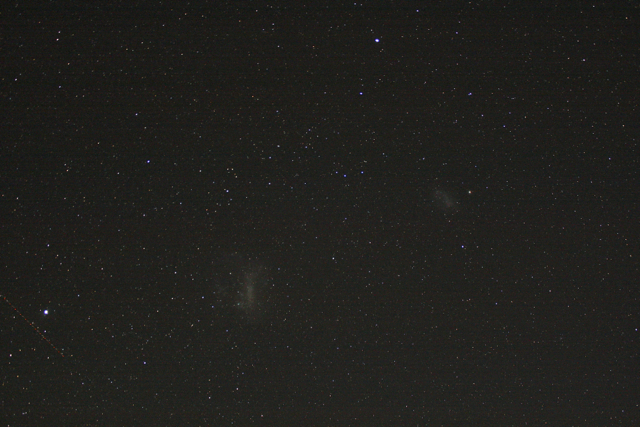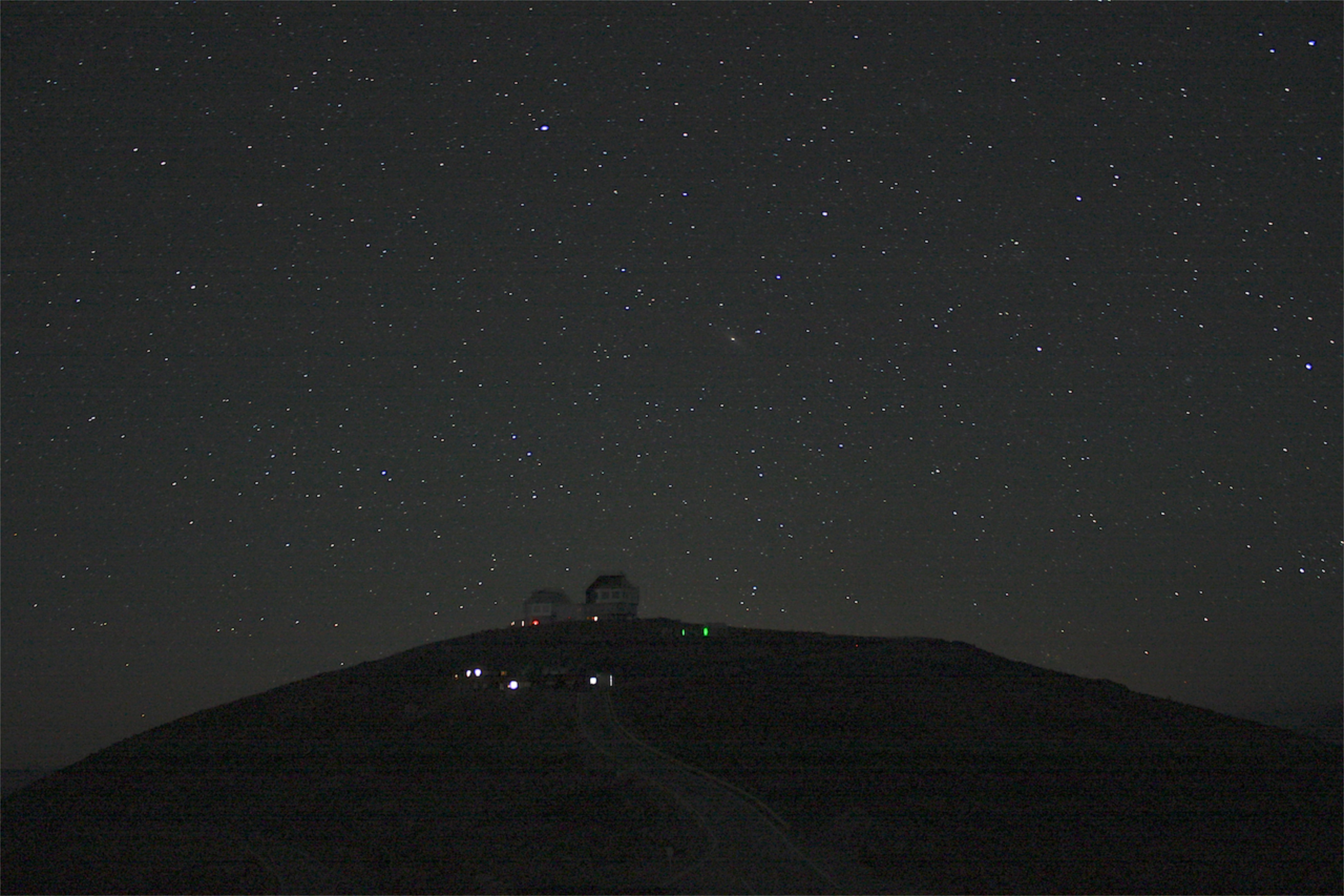Tonight is the last on-sky night for MagAO in 2012. Don’t panic. We’ll be back with a vengeance in Spring, 2013!

We began the night tonight by looking at a bright star that Runa chose for calibration. Upon further inspection, and much to our surprise, it turned out to be a heretofore unknown binary! We’re calling it “Runa’s star” and will have to follow up on our next run.
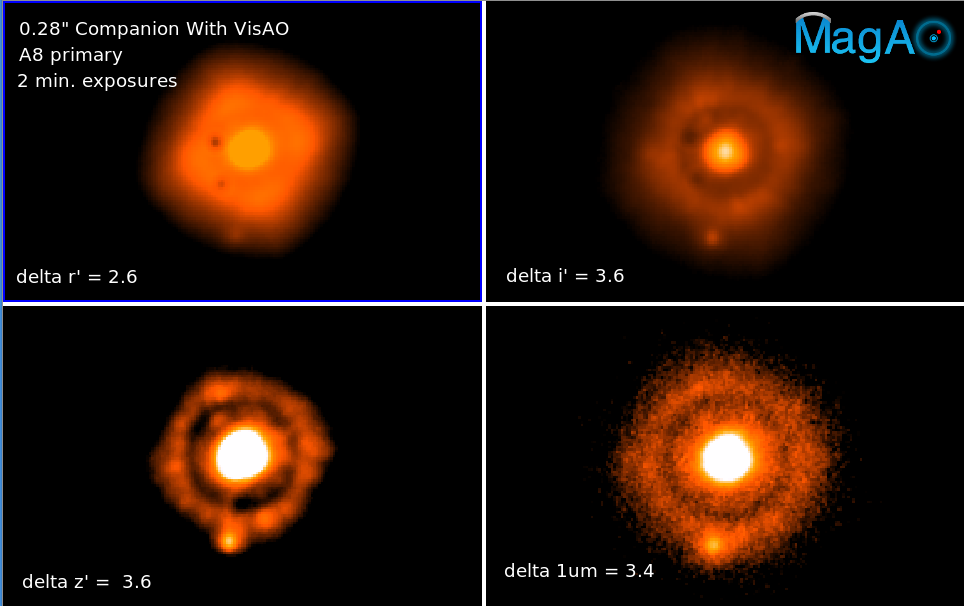
We also commissioned a few of the more exotic Clio modes today, including the Apodizing Phase Plate (technical link, non-technical link) and Non-Redundant Masks (technical link, non-technical link). Both of these techniques are designed to probe the regions close to a star. One (APP) allows you to achieve extra high contrast close to your star (distinguishing faint planets from bright stars) and the other (NRM) allows you to image the inner regions of a system at extra high spatial resolution.
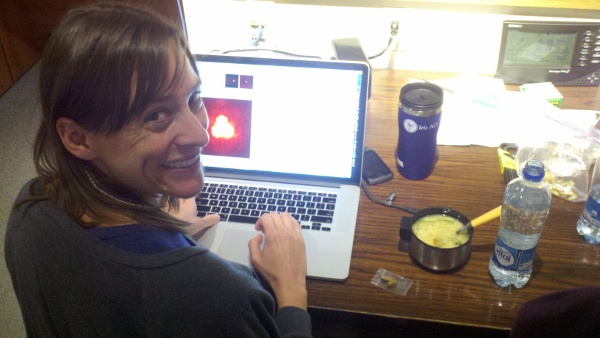
On the VisAO side, we managed to achieve, as our PI describes it, “the highest resolution image ever taken in the universe”. This means that we had great seeing and great AO correction and looked through our shortest wavelength (“bluest”) filter – [OI] at 6300Angstroms. We were able to achieve resolutions of <25milliarcseconds. An arcsecond is 1/3600th of a degree, so 25 milliarcsecond resolution means we can distinguish objects that are separated by only 0.0000007 degrees on the sky! By contrast, the resolution of the human eye is a paltry 16 arcseconds or so. Stay tuned for Laird to write a paper with a title something like his quote above.
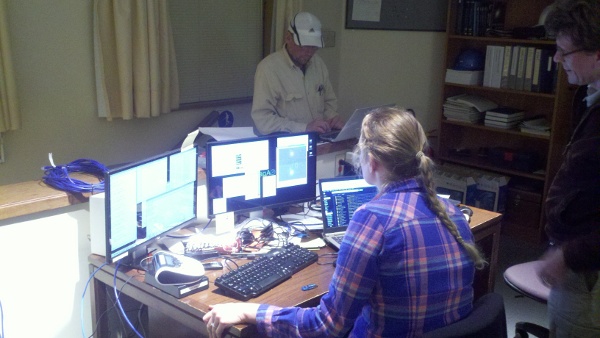
Don’t stop reading the blog because we’re pulling MagAO off the telscope tomorrow either! We’re taking lots and lots of data home that we will have to analyze “for real” instead of on the fly at 3am. We expect to do much better when we return to Arizona, triumphant and well rested! We’ll be keeping you updated as we begin to quantify our on-sky performance for future observers, establish bragging rights, prepare for conferences and make new scientific discoveries.
Quotes of the Day:
“Clio sucks!” -nameless Clio operator
[sadly] “What? Your TO sucks?” – Jorge, the TO (Telescope Operator)
“Time to leave this valley of tears” -Runa. Apparently having a new star named after him wasn’t enough to counter the valley of tears effect.
“If my plane crashed, I would still want you to graduate” -Kate to Jared, after he showed her the data drive she would be taking back on the plane with her. We’re sending several copies on several planes just in case. I swear this was going to be a quote even before I agreed to write the blog post!
In honor of our last night on sky, I’ll leave you with some of the nighttime shots that I’ve taken this week.

